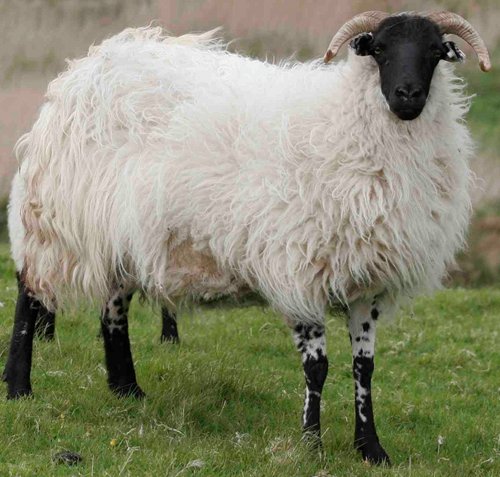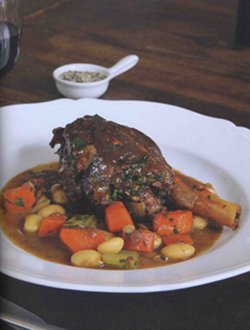Hill Lamb
 Coming from areas such as Connemara, Kerry and West Waterford, where a rugged terrain with heathers, wild herbs and grasses produces a distinctive texture and herbal flavour, Irish hill lamb is smaller and leaner than its lowland cousins and its season is much later, running from late summer to early winter. During the last decade it has become recognised as a delicacy – and one with added health benefits at that - and is increasingly seen under regional branding.
Coming from areas such as Connemara, Kerry and West Waterford, where a rugged terrain with heathers, wild herbs and grasses produces a distinctive texture and herbal flavour, Irish hill lamb is smaller and leaner than its lowland cousins and its season is much later, running from late summer to early winter. During the last decade it has become recognised as a delicacy – and one with added health benefits at that - and is increasingly seen under regional branding.
In West Galway, the Connemara Hill Lamb group (connemarahilllamb.ie) was established 1999 to protect and promote this unique product of the area, and successfully achieved the European Protected Geographical Indication (PGI) status in 2007. Others especially worth seeking out include Comeragh Mountain Lamb (comeraghmountainlamb.ie); and Ring of Kerry Quality Lamb (www.ringofkerryqualitylamb.ie).
The best restaurants are keen to showcase this special local food and, although retail availability varies, local butchers are always an ideal place to shop. Some Connemara Hill Lamb products are available through speciality butchers such as the fabled McGeoughs of Oughterard (connemarafinefoods.ie), renowned for their superb air-dried and smoked meats, but fresh meat is not yet offered online by the producer group.
In Waterford, Fáilte Ireland food champion Colin Jephson, of Ardkeen Quality Food Store (www.ardkeen.com), is a keen supporter of Comeragh Mountain Lamb, which is also available online from the producer group (comeraghmountainlamb.ie), as is Ring of Kerry Quality Lamb (ringofkerryqualitylamb.ie).
 RECIPE: Braised Lamb Shanks With Garlic, Rosemary And Butterbeans
RECIPE: Braised Lamb Shanks With Garlic, Rosemary And Butterbeans
Although hill lamb is not specifically called for in this dish it would be a delicious choice. The recipe, from Paul Flynn of The Tannery restaurant in Dungarvan, Co Waterford, features in Martin&Paul’s Surf’n’Turf (Quadrille), which is based on the RTE series of the same name.
Gorgeous comfort food and ideal for the time of year, it perfectly illustrates Paul’s wonderfully down to earth way with food. Paul likes to serve it with celeriac mashed potatoes, to mop up the juices.
Serves 4
2 carrots
2 celery sticks
1 leek
2 small onions
plain flour, to dust
sea salt
freshly ground black pepper
4 lamb shanks
2 tbsp duck fat or olive oil,
plus a little more
4 garlic cloves
2 good sprigs of flat-leaf parsley, plus ½ bunch, chopped, to serve
1 bay leaf
1/2 bottle red wine
400ml chicken stock or water
400g can butterbeans, drained and rinsed
Preheat the oven to 160ºC/325ºF/gas mark 3.
Cut the carrots, celery, leek and onions into relatively even 2cm chunks.
Put some flour in a broad, shallow dish, and season it well with salt and pepper. Turn the shanks in the seasoned flour to coat, then pat off the excess.
Heat the duck fat or oil in a casserole over a medium heat, then fry the lamb, turning, until golden and crispy. Remove from the casserole and set aside.
Drain off the excess fat and add some fresh oil. Add the carrots, celery, leek, onions, garlic, sprigs of parsley and bay leaf and cook over a high heat until the vegetables are browned.
Deglaze the casserole by adding the red wine, scraping the residue on the bottom of the pan and stirring well. Add the stock or water, place the shanks on top of the vegetables, cover and cook in the oven for 2½ hours.
When the lamb is cooked, skim the fat from the top of the sauce, add the butterbeans and chopped parsley, and season to taste. Place over a medium heat until just heated through, then serve.





There are currently no comments
Leave a comment
Not a member? Register for your free membership now!
Or leave a comment by logging in with: